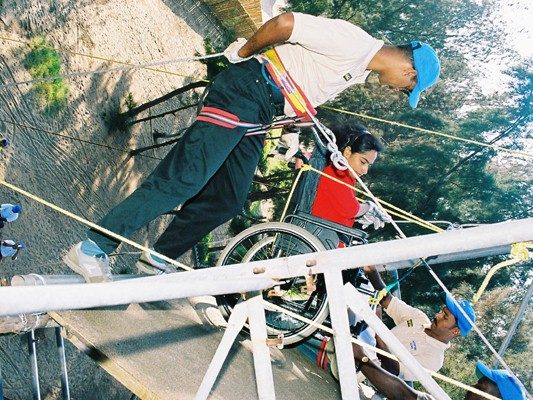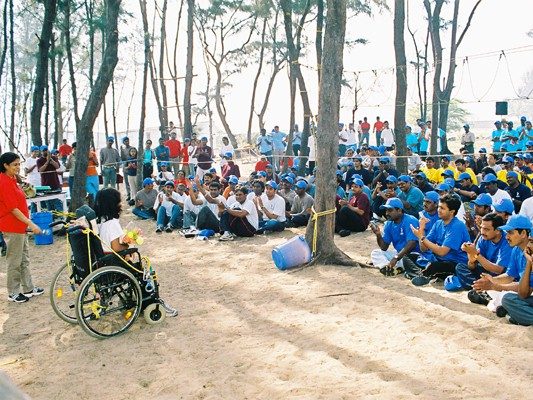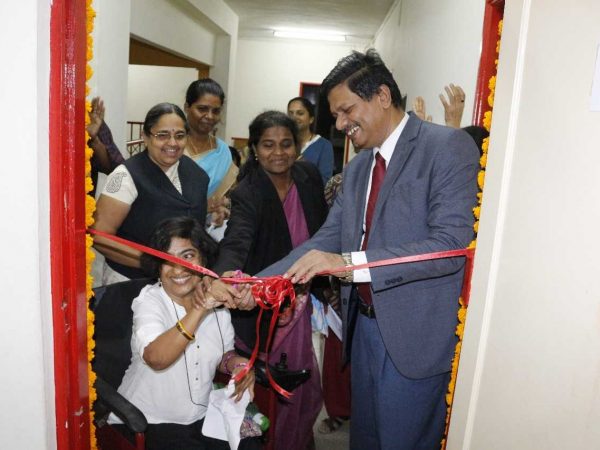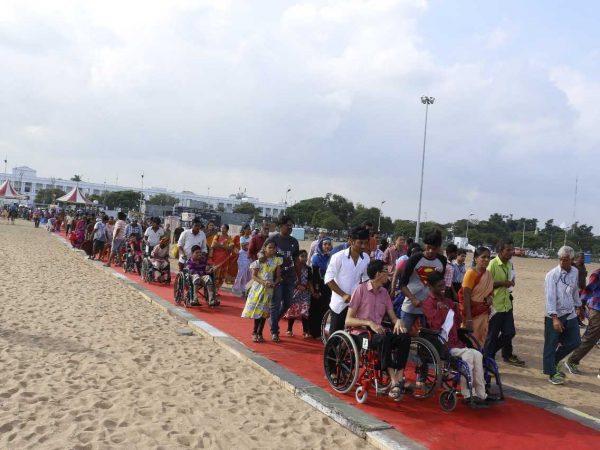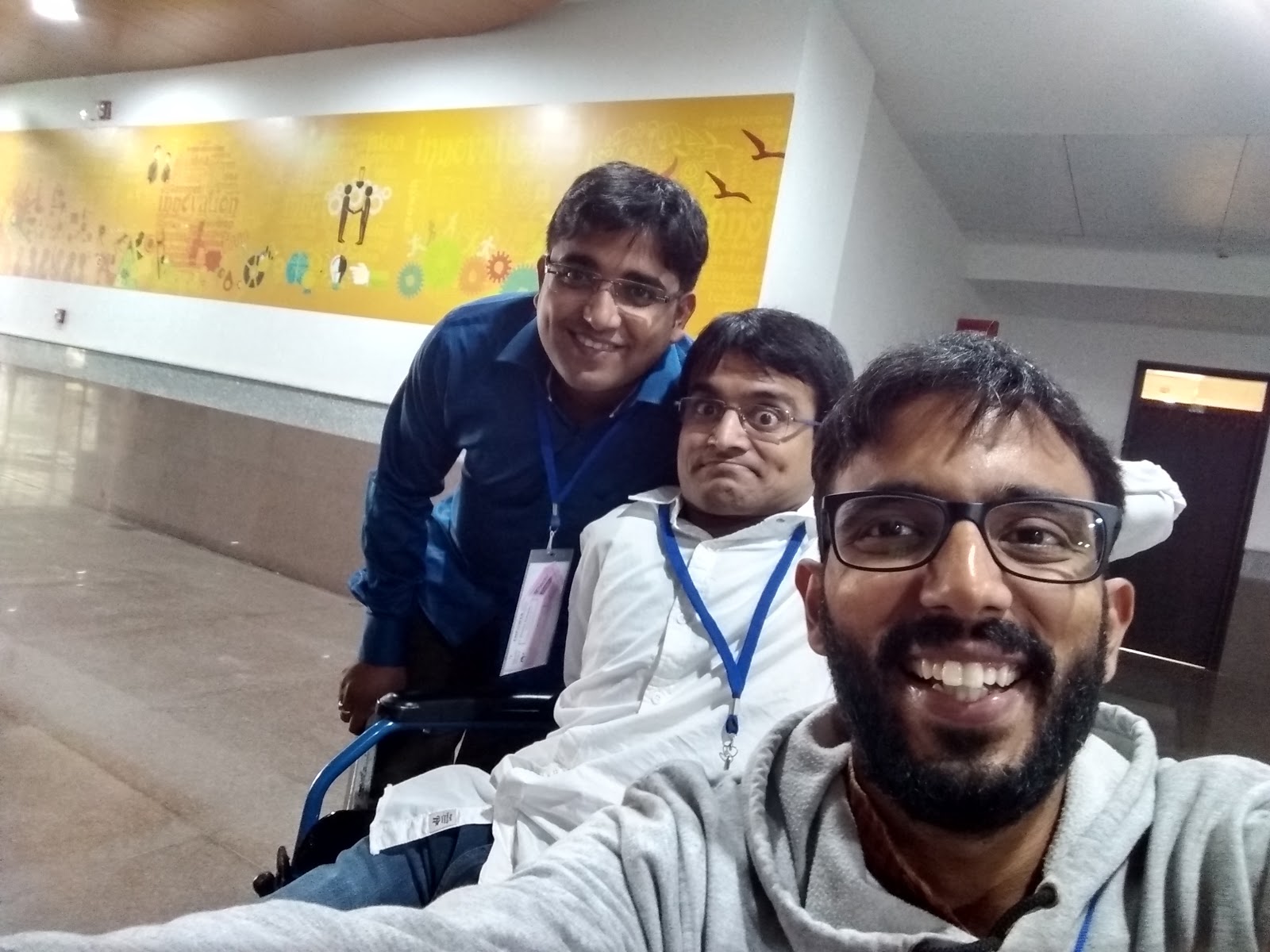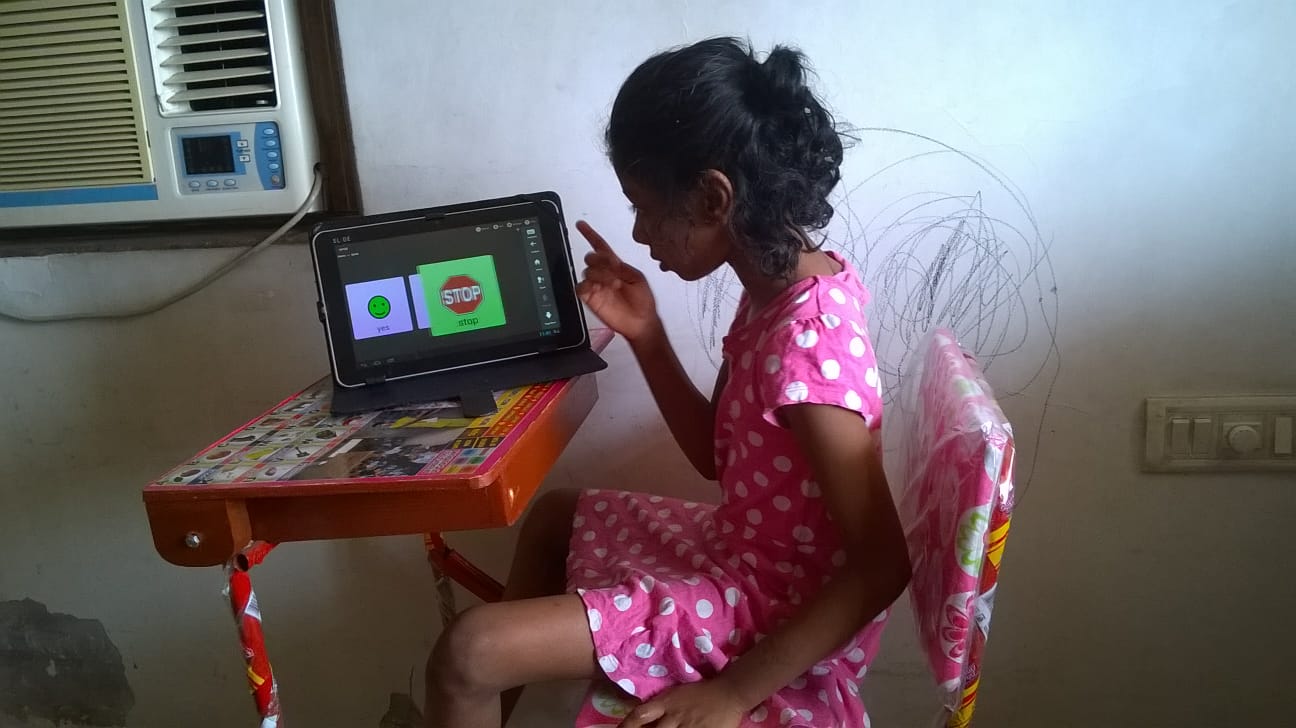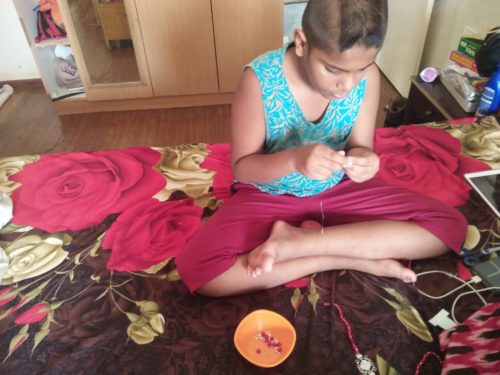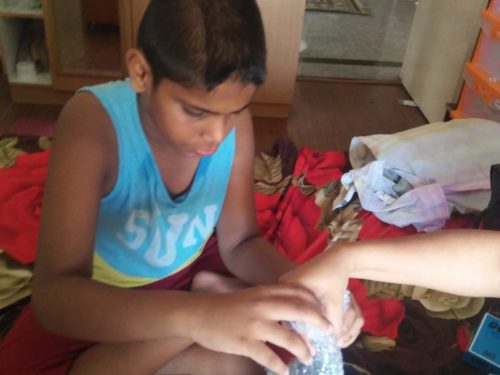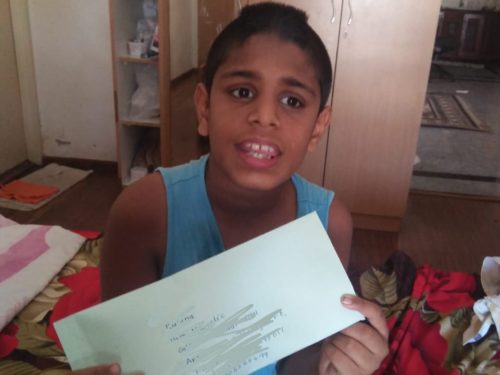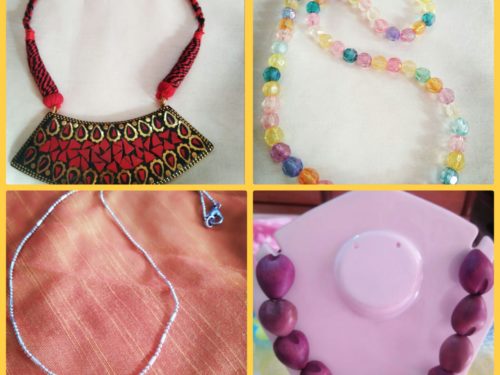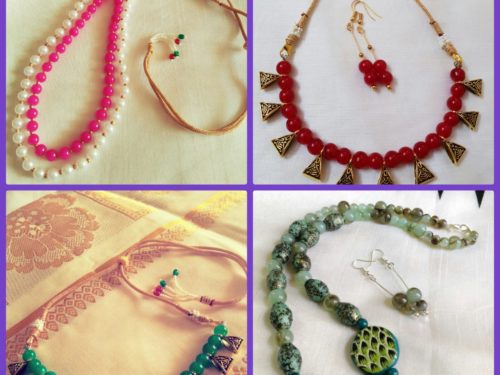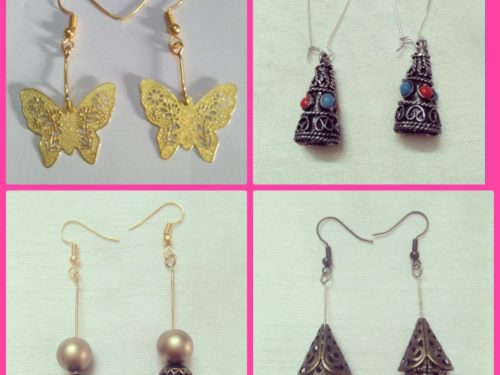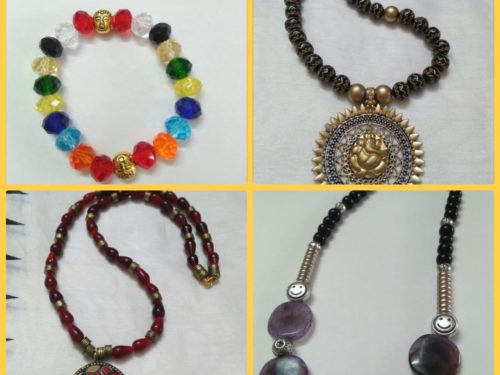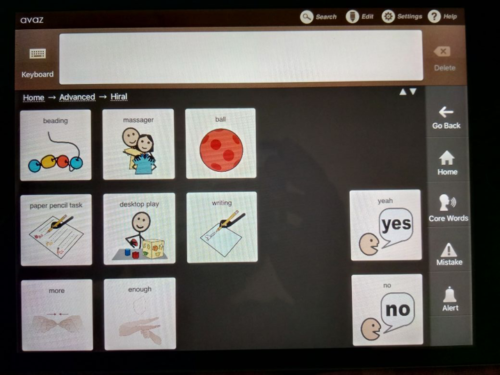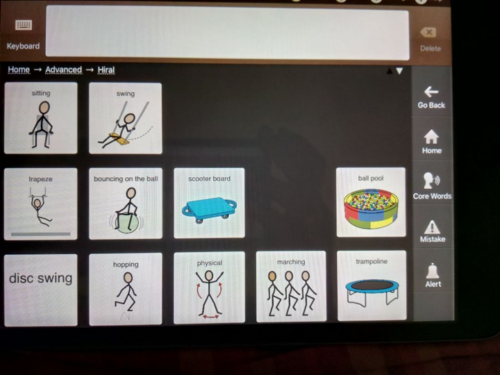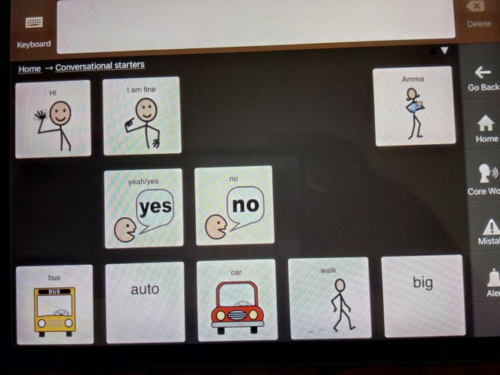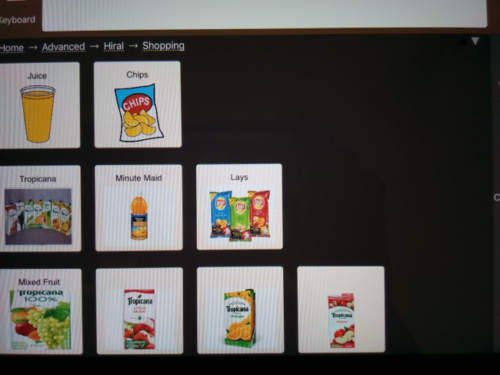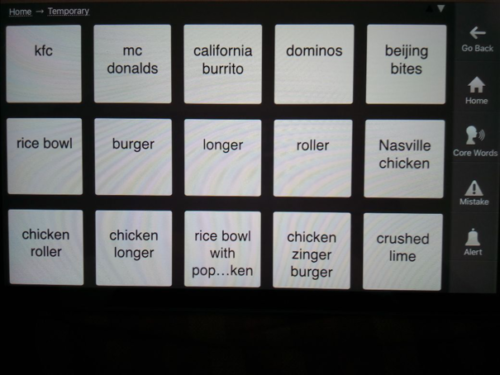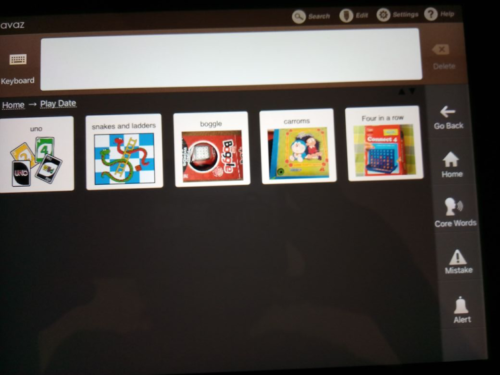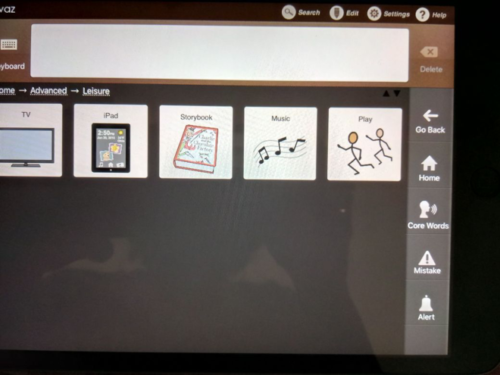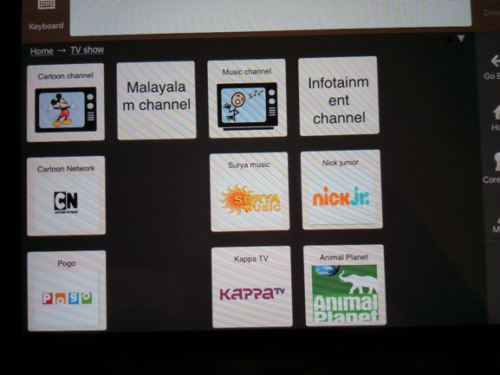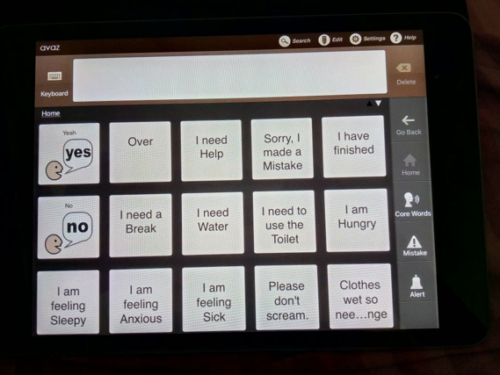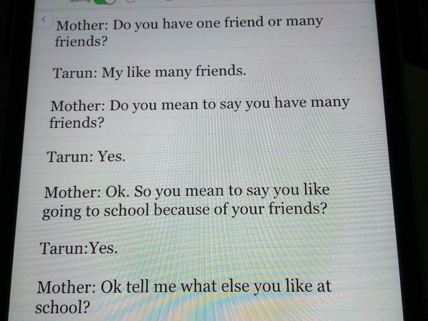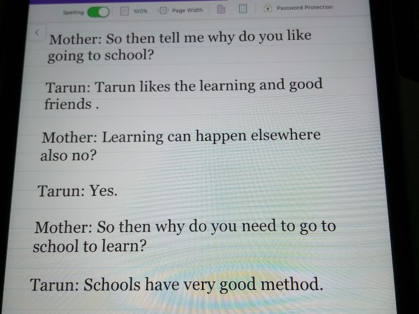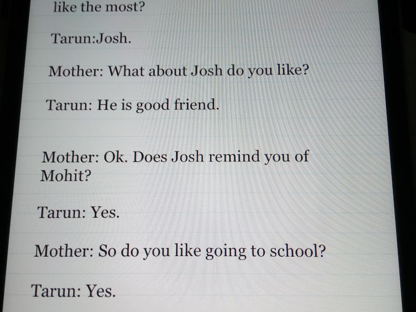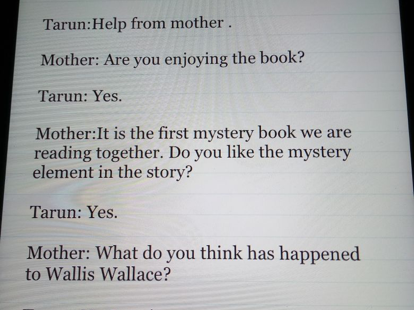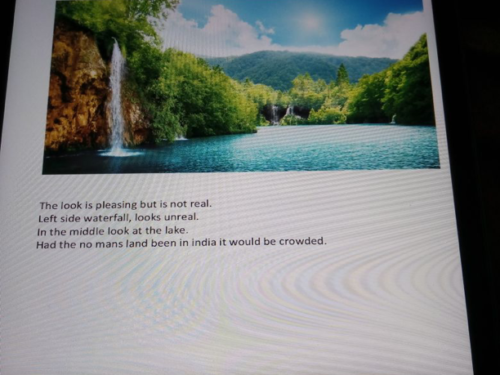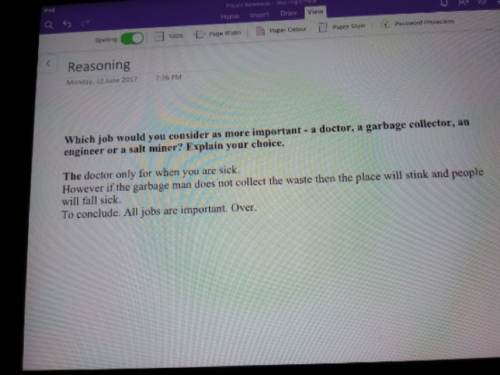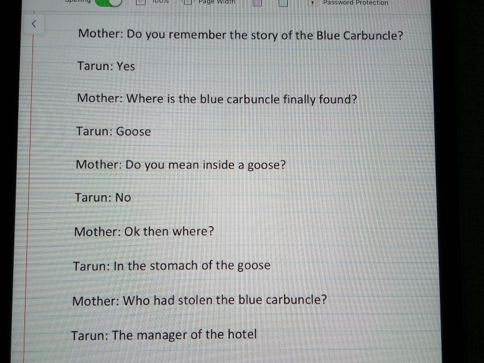A Mother’s Dream for her Son’s Independence
https://www.avazapp.com/products-avaz-aac-app/Guest Post by Priya Sasi Murali
When Pranav was diagnosed with Pervasive Developmental Disorder (PDD-NOS) as an 18-month-old baby, his father and I felt lost and disheartened. But as the days passed, we were able to gather our courage. We began working through the emotional turmoil bit by bit. And it was around this time that we began our search for answers to how we could support Pranav to live his best life.
The Beginning of our Journey
Initially, we were overwhelmed by the range of therapies and interventions, especially since not many of them seemed to be scientifically proven. As my search for more proven and sophisticated approaches continued, I came across a diploma course in Special Education with a focus on Autism Spectrum Disorders (ASD) from a reputed school. I immediately enrolled in the course. This gave me a better understanding of ASD. Learning about the various conditions, characteristics, behaviors and proven teaching methodologies for children on the spectrum helped me better formulate ways in which I could support my son.
As Pranav grew older, so did my desire to empower my son. I continued to educate myself. I used to read a lot of books – from autobiographies of high functioning autistics to parent experiences, research articles, blogs, and other related writings. My thirst for knowledge and my will to empower my son led me to attend a lot of conferences. I interacted with senior professionals and experts in the field and gained many valuable insights.
My Goals
When Pranav was about 9-years old, I formulated two primary goals for us. One for Pranav and one for myself.
- For Pranav, the goal was to make him independent, functionally and financially.
- For me, it was to support Pranav as he worked to develop his personality and individuality.
With these goals in mind, we began working on a few areas we felt were essential to achieving them.
Functional Independence
To work towards independent living, we started with functional independence. We realized that his sensory issues are a huge hindrance for his Activities of Daily Living (ADL) independence. He was highly sensitive to some simple activities like washing his face, cutting his nails, a haircut among others. The loud sounds from a pressure cooker and blender also bothered him. We worked on normalizing these sensitive activities through constant modeling. Today Pranav has come a long way from where he started. He now helps me with chopping vegetables and watches calmly as I make chutney (a spicy Indian relish that requires the use of blender). At times he even operates the blender on his own with my presence.
Financial Independence
The next area of focus is financial independence. When Pranav was 10, I requested his school to move him to the vocational stream. I believe that this will enable Pranav to learn the skill set required for him to be financially independent. He is now getting trained in 3 or 4 vocational skills in his school and I make sure to work closely with his teachers in building those skills.
Safety
Safety is another area that is important while learning to be independent.. We started teaching him about household safety to begin with. Initially, we taught him not to touch anything that was hot. Steam was, therefore, a useful indicator for us. Pranav learned that if steam is coming out of any object/item, he should not touch it. Next, we moved to handle stoves. After a lot of hard-work and modeling, Pranav can now safely operate the stove by himself.
Road safety is something we practice regularly. I personally believe that every child should be taught road safety measures. Every day, we go for a walk for about half an hour and I never hold his hands. He walks straight on the footpath. Pranav has also learnt to cross manual signals and he is learning to cross automated signals as well. He is used to traveling in all sorts of public transport with an adult and loves it!
Working to Develop Pranav’s Personality
I want Pranav to be a self-regulated individual and to achieve this, I am teaching him to take care of his emotions. I have enabled him to understand, over time, to take NO for an answer. Especially if they involve his favorite items. This has enabled him to adjust to every situation he encounters. For instance, when our relatives visit us, he has to sleep in our room and has to give up his bed. Through regular work, we are now at a place where such requests do not trigger him.
Also, as I was teaching him to identify and make do with his emotions, I realized music helped him. That it was serving as a coping mechanism for him to regulate himself. Now he goes for regular music therapy sessions in a reputed musical team which works for children with special needs.
Pranav’s Rights
As Pranav works towards leading an independent life, we are working to create an awareness in him that he should be proud of who he is. That he has a whole community of people he can take support from. And that he, unfortunately, would have to work harder than others to secure his rights.
To this end, we make it a point to participate in all awareness drives and activities. We want him to bring to light with all pride and dignity that he is autistic. As a mother and as a person committed to social justice, I’m determined to enable Pranav to fight for his rights and create an inclusive society.
This is What Independence Looks Like
This year, on World Autism Acceptance Day, Pranav and I went shopping at Big Bazaar. He had his shopping list with him on Avaz. I had helped him create the list with options so that he could choose between two items of his choice. He was able to pick the items of his choice and get them billed. He also interacted with a couple of people around the store! Through the whole experience, Pranav remained calm and he thoroughly enjoyed himself. Truly, given a supportive environment and the right tools, children with autism can happily socialize and interact.
Did I mention that this was his first-ever shopping experience?
I took immense pride in what Pranav was able to achieve that day. It was an indication to me that we are moving in the right direction. That I am bringing up my child in a way that empowers him. I also feel blessed and pray to God to guide me in bringing him up in a way that he empowers himself as well as his community!
Priya is a qualified Special Educator specializing in Autism Spectrum Disorder (ASD). She lives with her family in Chennai, India. Her son Pranav is 14. He is non-verbal and has been diagnosed with a pervasive developmental disorder (PDD-NOS) which is one of the four Autism Spectrum Disorders.
We are grateful to Priya for having shared her story with us. Her journey would give some of us new ideas to try with our own children while opening the eyes of some others to the possibilities.
We would love to hear your thoughts and the kind of journey you are on personally or with someone you care for! If you or anyone in your circle is interested in sharing their story, do drop us a line! We’re listening! 🙂
Drop a comment or write to us at support@avazapp.com
A Self Made Woman – Ummul Khair
At 21, Ummul Khair decided that she no longer wanted to stay at home. She picked up the phone and dialed an inquiry number. But it was not an easy task to find Vidya Sagar (formerly – The Spastics Society of India). Many calls later, she boarded a train to Chennai. This is the journey that changed her life and made her the person she is today!
Almost two decades later, Ummul is now the Coordinator of the Disability Legislation Unit (DLU) at Vidya Sagar. She works on advocacy for people with disabilities. A student of Sociology and a graduate from the Tamil Nadu Dr. Ambedkar Law College, Ummul now eagerly awaits her enrollment in the Bar Council. Ummul is an independent, outspoken, and knowledgeable woman who aims to make our community more accessible, one audit at a time.
Team Avaz had the privilege to interview Ummul and get to know more about her, her journey and her work. So sit back and get inspired by the life of this woman of substance!
Team Avaz (TA): Who is Ummul Khair? What is she like as a person?
Ummul: I have a disability. Yes! But I’m not a disabled person. I have my strengths and weakness and I would like others to accept my abilities. Accept me for who I am and accept me as a Person with Disability.
I used to be an innocent child and always depended on others but now I am able to help others and that makes me happy!
TA: Tell us a bit about your childhood? Can you please share some of your fondest memories?
Ummul: As a child, I was always on the bed. My mother used to carry me to every place. I didn’t own a wheelchair. So, I never had the chance to leave my home on my own. My parents worried too much because of my disability and never left my side.
On the bright side, I was favored by my parents more than my brother. Whatever I wished for, was immediately done! But I secretly yearned for education; to be independent and to help and care for others!
I don’t remember most of my childhood, but I do know that I loved eating curd and my favorite candy, Gems. I always looked forward to playing with my cousin!
TA: Starting your education at 21 needs lots of courage. Can you please tell us what motivated you?
Ummul: I wanted to know what the world was like. I wanted to meet people and make friends. Since I spent my childhood inside my home, I never knew how to handle any situation nor did I know how to interact with people. I wanted to know what rights I had as a woman and as a woman with a disability.
I couldn’t go to school because my parents were overprotective. It did not help that people around me believed education was of no use to me. For many years I saw my cousins reading, but never had the opportunity to read those books. I remember reading the subtitles while watching movies and soap operas.
There was this particular soap where the protagonist was a woman with a disability. It portrayed her journey and how she overcomes the challenges. Watching it day after day, kindled my spirit and I wanted to become like her! I wanted to break the stereotype.
“To express my thoughts, come out of my boundaries, and break the stereotype, I wanted to pursue my education.”
TA: Talking about education, you did Sociology and now you have done Law. Who or what inspired you to choose this path?
Ummul: Do you agree that Rights come by birth? I didn’t know my rights for a long time. I thought it was rude to refuse a favor(though I never asked for it). But now, I don’t accept any favor unless I have requested it.
I believe in human rights and that’s what I fight for. Not just for persons with disability but for everyone! This is the reason behind me taking up Law – because no one should be denied their rights.
Helen Keller has been a huge inspiration as well. Her writings have had a great influence on me.
TA: What, according to you, has been the biggest challenge life has thrown at you so far? And how did you overcome it?
Ummul: I used to speak only in Hindi or Urdu. Hence learning a new language, English, and improving my proficiency in it was a challenge. Also, at times, I forget. Imagine being a forgetful lawyer! That’s my biggest challenge. (laughs)
On a more serious note, accessibility is another challenge. Not only for me, but also for every person with disabilities.
The attitudinal barrier is another predominant challenge that needs to be addressed immediately. When I was at Madras High Court for an access audit, the security person stopped me from entering a particular room as it was not accessible. But that was exactly the reason why I was there!
People take one look at me and think that I am struggling in a wheelchair.
“People fail to see ME, as the disability is more visible to them!”
TA: You along with the Disability Rights Alliance played a primary role in making the Besant Nagar and Marina beaches in Chennai accessible for wheelchair bound folks – Can you tell us more about this effort?
Ummul: Pushing a wheelchair on the sand is very hard. I used to sit near the footpath and a volunteer would have to stay back for me – every time I wanted to visit the beach! These experiences sparked the idea to work towards making beaches accessible for people with disabilities.
I researched various accessibility projects around the world. Then I started writing petitions to all the concerned authorities. But it was really hard to get their attention as I was a lone student. This is when I came to know about the Disability Rights Alliance (DRA). I collaborated with them and worked with Chennai Corporation as well. After lots of research, follow-ups, and processes we were able to celebrate World Disability Day at the beach with our students.
TA: What kind of changes would you like to see in our society? What is your vision of an inclusive society?
Ummul: Equal opportunities for people with disabilities. Every place should be made accessible. When I was in the US representing India for a one-month student leadership program, everything was accessible to me. I was able to go wherever I wanted to and that is something we should work towards.
My idea of an ideal inclusive society is where people with disabilities not only seek help but are also able to contribute to society and give back to those in need.
TA: That’s really a great vision! Thank you for sharing your thoughts with us. Before we close, is there any message you would like to share with our readers?
Ummul: Most certainly!
“Don’t ignore us; talk to us and not behind us.
Remember! Everyone is interdependent and no one is completely independent.
Everyone needs support, everyone needs suggestions. So value each other.
Give us the opportunities to show what we are capable of. ”
Ummul signs off by telling us about her rappelling and parasailing experiences and how she loves to take risks and not give up at the face of adversaries! Team Avaz was inspired by this courageous woman who fights for human rights and for the rights of people with disabilities. More power to you Ummul!
Together, let us strive to Make Every Voice Heard!
Dipak Ghosh – The World at His Toes
“I feel that society only gives us 30% opportunity. While we have to put 130% effort to be capable!
We don’t want to take a jump ahead nor do we do we want to lag behind. What we want is to walk together with everyone in the society.”
– Dipak Ghosh, Disability Rights Activist
A few weeks ago, we had a chance to present our work and attend Empower 2018 – an Assistive Technology conference in New Delhi, India. Thinkers and innovators from the Indian Institute of Cerebral Palsy (IICP), National Institute of Speech and Hearing (NISH), as well as those from various Indian Institutes of Technology (IITs), among others, were present. It was a great learning experience for us, to be able to interact with brilliant minds from across the country.
The interaction and new friendship we cherish the most from Empower was the one we had (and continue to have!) with Dipak. Dipak is 33. Having completed his BCom. (Hons.) in Accountancy, he is an accomplished artist and musician. He is also among India’s foremost advocates for equal rights and opportunities for persons with disabilities.
Dipak was diagnosed with Cerebral Palsy when he was an infant. He was almost three years old when he was able to sit up. Because of CP, he has very limited use of his hands. This, however, was hardly a deterrent for Dipak. Being a creative child, he taught himself to use his legs to write, paint, play and engage in his daily routine.
As a child, Dipak was quite naughty, often getting into trouble. He passed his secondary education from the Center for Special Education – IICP. He attributes a large part of his success to the support he received during his schooling here. His school life was full of excitement and fun in the company of his friends and teachers. An academic topper, he received several medals in the sports as well. It was here that Dipak learned to draw and play musical instruments with his feet.
Dipak also began using the keyboard very efficiently with his toes. But this was getting extremely demanding and tiring for him. Hence he began searching for a simple and effective communication tool. This was when Dipak came to know about the Avaz AAC app through IICP. He was thrilled when he found Avaz easy and effective to use for his specific requirements. Dipak began using Avaz in 2013 and there has been no looking back since! You can watch a video of him using Avaz here –
Dipak’s mother is a huge influence and inspiration for him. She has always believed that there is no greater dignity than serving others. Taking a page out of his mother’s beliefs, Dipak is today a well known and respected advocate for the CP community’s rights, inclusion, and opportunities. As a public speaker and activist, he has inspired many by his example. He is currently working on a project called the Media Lab in collaboration with the National Resource Center for Augmentative and Alternative Communication (NRCAAC). This project is looking to formulate a new concept of understanding and expression of ideas, aspirations, feelings, and thoughts.
For all his accomplishments, Dipak was awarded the Surrendra Paul Memorial Award for Courage. He was declared The Most Creative Adult by the Governor of West Bengal.
Dipak is a great inspiration, not only for his community but also for each one of us. His story pushes all of us at Team Avaz onward with greater resolve towards Making Every Voice Heard!
Avaz is now available on Play store.
Download Avaz for free: https://tinyurl.com/y6wodn8h
In India, download Avaz for free here: https://tinyurl.com/y9fxazv8
AAC & Angelman Syndrome – A Testimonial from a Parent
In today’s blog post, Kavitha* shares her daughter, Pooja’s* journey with AAC.
Kavitha is a designer by profession. She lives with her family in Mumbai, India. Pooja is her 8-year old child, who is non-verbal and has been diagnosed with Angelman Syndrome.
Kavitha reflects upon her experiences with AAC adoption in India and her child’s progress through continued use of AAC apps:
Pooja’s Journey
Pooja was diagnosed with Angelman Syndrome at a very early age. Among other characteristics typical to this diagnosis, she was non-verbal. She faced many transition issues in her daily life. Furthermore, Pooja also had certain behavioral challenges. 
Since Pooja’s scanning abilities were great, her therapist in the US had advised us to use Avaz instead of the Picture Exchange Communication System or PECS. That was one of the best suggestions we were offered. And there has been no looking back since then! After the introduction of Avaz into her life, we noticed that she was also able to overcome some of the behavioural challenges she faced.
When I came back to India from the US, I noticed that no one here was using AAC. Awareness levels too were very low. Since we had seen success with AAC, I was keen on its continued use for Pooja. I had to personally advocate for the use of AAC and Avaz in many of the schools that Pooja has attended over the years. I have since realized that persistence is the key.
Pooja is now in the 4th year of her schooling. After many years of persisting, Pooja’s teachers have finally added their folders into her AAC system. In fact, there used to be a time when I would write daily notes to the teachers in Pooja’s school diary, insisting that they use Avaz in school everyday. On the flip side, such persistence has not always yielded positive responses from teachers & therapists.
One such instance was when I was asked to stop behavior therapy at a reputed autism centre in Mumbai. This was because I was constantly insisting on the therapist using at least 5 minutes of Avaz with Pooja for her to pick up basic communication. The director didn’t understand my point of view. I was told that they will not be able to serve Pooja, as their therapists could not work in the manner requested.
It has been 3 years since we began using Avaz for at least half an hour daily. Regular use has enabled Pooja to do her tasks easily. Earlier she would be resistant to doing the same work. Now we are at a stage where we are able to discuss Pooja’s daily schedule on Avaz, and she too knows her plan of action for the day.
Today Pooja is able to buy groceries or order her favorite food, french fries, at McDonald’s. She says “thank you” to people. She is able to express to me whenever she misses her favorite person – her Nani (maternal grandmother in Hindi). She wishes family members on their birthdays. She is able to recount to her teachers that she went for a movie and ate popcorn. She tells her dad about the time she spent at the mall with her Mama… The list is endless!
And the best part. She is now also able to read sight words on Avaz.
AAC awareness is gradually increasing in India, but I firmly believe that it could move faster. I really pray that one day, every parent, teacher, and therapist will wake up to the advantages of AAC. I hope that the understanding grows – that such a medium that acts as a voice for our children makes their lives way more expressive, independent and happy.
We are grateful to Kavitha for having shared Pooja’s story with us. Such stories inspire us to strive towards constantly improving the product and making every voice heard!
Share your thoughts! Leave us a comment!
Do you have a similar story to share with us? Write to us: support@avazapp.com
Picture Credit: Hoda Nicholas
*Names Changed
Swati & AAC – A Case for Building Communication before Speech
Gita Arvind is a scientist by education. She lives in Redmond, Washington with her husband and two lovely girls. They keep her curious about everything, from Disney characters to human nature!
Being a mother of a child with speech challenges, Gita is also deeply passionate about advocating for access to AAC for children with special communication needs. She wishes to share her daughter, Swati’s journey with AAC. The following is her account of this journey.
Introducing Swati
Swati is a happy, nonverbal 10-year old, who loves going up to people and asking them to sing to her the songs that she likes. The way her face lights up with a smile when they oblige, is a sight that instantly warms my heart. Don’t you think that is what communication is all about? That is, being able to convey a message that helps you satisfy a need?
Just so you know, in the instance above, Swati did not use speech to communicate, as she is nonverbal. Then, how did she do it, you might ask? Well, she used Augmentative and Alternative Communication (AAC) – specifically, an AAC App on her iPad. And this is something that I would like to talk to you about today.
This is something very close to my heart. It was born out of a desire to ensure that other parents in India, do not have to go through the same heartache and pain that I went through when Swati was about 4 or 5 years old and was still not speaking a word. Each new speech therapist that we consulted, suggested a different approach. But, no one talked about AAC until much much later. They only insisted on trying speech.
Finally, when Swati was around 6 years old, we tried Sign Language. But I found that it was a challenge for her because of the language’s heavy reliance on fine motor skills – and this was an issue for her. Furthermore, it is only understood by those who know sign language, to begin with. We then tried the Picture Exchange Communication System (PECS). That brought with it a different set of limitations. Swati mastered it so quickly, that we were running out of space on her picture books within no time! It was after seeing a bunch of speech therapists and professionals, reading and trying to gather as much information as I could, that I decided to try out an AAC App on my own, with Swati (who was around 7 years old then).
Since then it has been a long journey to get to where we are now. Today, I finally feel validated in my decision to have introduced an AAC App to her.
How AAC has helped Swati
Swati has benefitted in many ways since she started using AAC. Some of those benefits are explained below:
- Behavior
Today, Swati is able to independently make a sentence, to communicate what she wants. She does this on her device, which in turn speaks it out for her. At age 4 or 5, when she still wasn’t speaking, she would probably have had a meltdown while trying to communicate the same thing.
- Fine Motor Skills
Her pointing skill has improved. She is able to choose 1 icon from a grid of 4×8 buttons.
- Attention
Swati has to create sentences by choosing all the words required to communicate it. She is able to pay attention to the screen for the entire duration it takes for her to make a sentence.
- Demonstrate Cognition/Intelligence
Swati’s receptive skills have improved because she can now show what she knows, by choosing the appropriate button on her device. Her expressive skills are also improving, as she learns to express more about what she knows, using her device.
- Self Esteem
Most importantly, she is confident of being understood by anyone around her when she uses her device to communicate. That in itself contributes to an increase in self-esteem!
Why do I want to make this case for access to AAC before speech?
I have seen how Swati’s life has improved for the better since she began using AAC apps. Given this experience, I strongly feel that it is my responsibility to educate and inform more parents and caregivers in India about AAC. I want to stress whenever and wherever possible about giving children access to AAC at an early age. I sometimes wonder how much more progress Swati could have shown, had she been given access to AAC at 3 years of age or even earlier- the typical age when children start to speak. And it bothers me that even today, speech therapists and other allied professionals in India are still unaware of these advances in technology. It is disheartening that they continue to insist only on speech production to parents of children with speech delays.
The app that we used for Swati was the Avaz App. This App is widely available in India and can be customized as per each child’s requirements. It is also available in many of our regional languages. That being said, Avaz is also more affordable compared to other AAC apps in the market and is much more user-friendly. Finally, I request all parents and caregivers out there not to be skeptical about AAC. Proactively consider introducing AAC to your child at an early age.
We are really grateful to Gita for taking time and sharing her daughter’s story with us!
Write to Gita on gitaarvind@gmail.com
For sales related queries, write to ramachandran.d@avaz.in
Advaith – The Young Entrepreneur who uses Avaz
We are very excited to share today’s post, which is written by Smrithy Rajesh, a special educator and mother of 10-year old Advaith’s (Addu). Advaith is diagnosed with Autism, Sensory Processing Disorder and ADHD.
Smrithy is a superb mentor and guide for parents who are just starting to use AAC. She has a YouTube channel – where she shares learning and communication strategies and you can read her blog here.
Advaith is 10 years old now. I am not worrying about his speech because of his excellent communication skills. He has apraxia and so making sounds is hard for him and words are not clear. For building communication skills we started with sign language then PECS and Avaz.
Now he is communicating independently using Avaz for all his needs, expressing feelings, dislikes, preferences, sensory overload, asking for medicines if he has any discomfort, asking for steam if his nose is blocked, ordering food in the restaurant, connected with family and friends and so on.
He is using Avaz in all places and in different situations. That is his communication device. That really helped him to reduce his anxiety issues. In the video below you can see, how he is connected with his customers. He is sending messages to them using Avaz. You can see his confidence level and comfort level.
Communication is happening everywhere. Use each situation to build communication skills. Start with their need based communication. It really changed our life!! Of course he is able to use words for communicating. AAC stimulates meaningful speech!
See Advaith communicating with his customers in this video below.
A proud entrepreneur, Addu sending thanks to his customers using Avaz. For most of his customers he used to send items by speed post. After that they send pictures and messages to him. Then I show him those pictures and explain to him. After that he sends messages to them using Avaz. He is fully connected in all steps and is able to understand. You can see, how happy he is!! We made this video by using his videos and some of his customers’ pictures.Most of the pictures got deleted, but we are thankful to all. Through this his communication skills are also improving and he is connected with more people.
Chitra and Tarun’s journey with Avaz!
Today’s guest post is from Chitra Paul, a parent who uses Avaz with her son.
I am Chitra Paul, Tarun’s mother and we are based in Bangalore, India. I am a clinical microbiologist by training and have worked for a few years before my son came into our lives. My career break became permanent when my son was diagnosed to be on the autism spectrum way back in 2008. Since then it has been a different learning path that I have been on. This led me to do my MA in Special Education and Inclusion from the University of Northampton, UK. My journey has made me into a proponent for inclusion for persons on the autism spectrum and I try not to miss any opportunity to advocate for them.
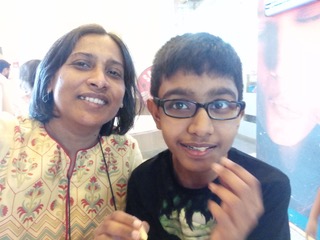
Currently, I also run a couple of support groups for parents via social media. I also provide support to parents on an individual basis in connection with parenting advice, education, intervention or just being a friend to talk to, all within the context of autism. (My email – chitraepaul at gmail dot com)
My son, Tarun, is a 12 year old boy diagnosed with autism. He is currently studying in Grade 6 of a mainstream school in Bangalore, India. He is a loving child who enjoys going to school. He has a few friends in school and enjoys being with his classmates. He loves reading and listening to music. He is learning the keyboard and can sing a little too. His favourite hobby is watching advertisements and songs on YouTube.
Being a parent to a boy with autism, I was constantly made aware about the importance of speech when my son was just diagnosed. However, what struck me as I read up more and more into this puzzle called autism was that many people were confusing speech for communication which was indeed the bigger challenge for these children. As my own son was non-verbal I too was constantly looking out for alternate options for him to communicate with.
It was at this point that I happened to hear a talk by Mr. Ajit Narayanan at the Autism Conference at NIMHANS in 2011. Avaz impressed my husband and me at that time itself. However, it was a device and the cost factor put us off. But I continued to follow up closely how Avaz was being taken forward. Additionally, as my son was just learning language I put off introducing PECS or any other AAC.
Turning point
However, things changed around when he was 7-8 when his special educator working on her personal belief discovered that he could write extremely well in perfectly good English with grammar and vocabulary intact. However, he needed some support to his hand when writing. At this point we realised that we need to provide him with a means to communicate and of course the first place I turned to was Avaz. By then Avaz had been modified to an iPad application and we purchased it as the prices were also well within our reach. This is how our journey with Avaz started.
Tarun’s Avaz personalized for his needs
Making Avaz work to Tarun’s strengths
However, as my son showed a greater inclination towards words and letters and not pictures, I realised I need to use only text when preparing the cards. That’s how we went about it. As my son had already shown that he was way ahead in using language and was already typing full sentences although nobody had taught him sentence formation etc., we started using the keyboard option at the beginning itself. Another factor was that my son also started typing which was much easier for him than writing. Because of these two factors I couldn’t make him to utilise Avaz in the usual manner as an AAC is advised to be started and used with children with autism.
However, since Avaz came into his life, his communication has grown in leaps and bounds and we often have conversations using the keyboard option which can also be saved. As he takes his iPad to school for work and communication, I have also created a personalised folder of regularly used words and sentences so that he can use them if he needs to communicate for daily needs. We have also used the same technique and used personalised material on Avaz during his occupational therapy and speech therapy sessions so that Avaz is his constant support for communication. The best part of Avaz is that it is extremely simple and easy to create sets of communication cards. This was voiced to me recently by another parent, who took my suggestion and purchased Avaz to use with her daughter who is on the autism spectrum. Avaz also has other features that are very unique to the needs of users in India like the option to create and use cards in various regional languages. Another great feature that supports and helps a parent to learn and adapt to the needs of their children is their application called Communication Adventures. I have used many of the ideas and tips listed in both these applications. One of the ideas suggests using it while reading with your child. As my son loves to read, I have used this strategy many a time with great success.
A glimpse of my conversations with Tarun
Some of these conversations were with his special educator, Ms. Priya, whose immense support helped him to reach this stage.
Do you have a story that you would like to share with us? Leave us a comment!
Popular Articles
- Building Literacy: Teaching Grammar to AAC Users
- Expansion of Language: Supporting AAC Learner’s Progress
- Avaz User Stories and Videos
- Avaz Joyful Reading: Resources for Shared Reading
- AAC Resources: Games, Activities and Communication Opportunities
- Avaz AAC User Stories: Why Nishant and his AAC System are Inseparable
- Downloadable Low Tech Communication Boards
- Get the Better of Reading Difficulties with MDA Avaz Reader
- AAC Apps for Adults with Acquired Communication Disorders
- Teletherapy: A smart way to facilitate remote speech therapy for adults and children
Recent Articles
- Expansion of Language: Supporting AAC Learner’s Progress
- Self-Care: Put Your Oxygen Mask On First Before Caring for Loved Ones
- How Knowing Word Families Helps in Achieving Reading Proficiency
- Revisiting Most Loved Avaz Features: Phonetic Match to Support Unrestricted Communication
- How to Develop Emotional Competence of an AAC User
- Tips for Shared Reading with an AAC System
- Understanding the Debate Behind the Diagnosis of Social Communication Disorder
- Encouraging Autonomy in AAC Communication
- AAC Apps for Adults with Acquired Communication Disorders
- Teletherapy: A smart way to facilitate remote speech therapy for adults and children

